Table of Contents
● Introduction
● Market Overview
● Key technology and design innovations
● Top-selling models driving market trends
● Conclusion
Introduction
Automotive displays rapidly evolve into crucial components that enhance modern vehicles’ safety, convenience, and entertainment. These advanced screens provide critical driving information and enable intuitive control over infotainment, navigation, and vehicle settings. Technologies like augmented reality and AI integration take the in-car experience to new levels, offering immersive visuals and smart, responsive interfaces that adapt to driver needs. There are flexible and curved displays that change how dashboards are designed by fitting perfectly into different parts of the car inside, making it look nicer and work better. The increasing popularity of connected vehicles and electric cars and the rise of autonomous driving technologies are reshaping the automotive industry by revolutionizing how drivers and passengers engage with their cars and shaping new visions for transportation.
Marke Overview
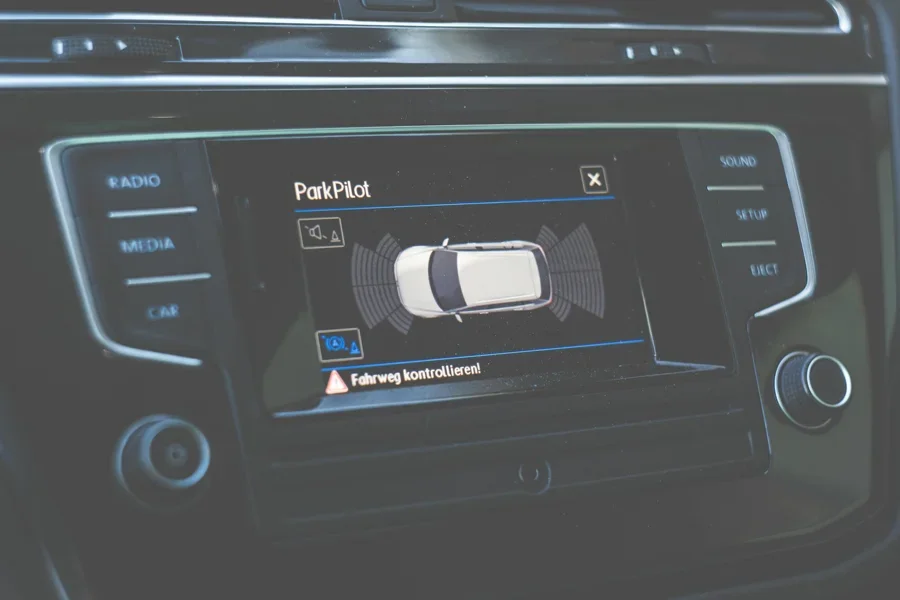
The automotive display market is expected to grow significantly, reaching USD 26.9 billion by 2032, up from USD 15.59 billion in 2024, with a CAGR of 7.1%, according to Fortune Business Insights. Key drivers include increasing demand for connected vehicles, advanced infotainment systems, and safety-enhancing features like head-up displays (HUDs). Technological advancements such as OLED and TFT-LCD panels continue to shape the market by improving display quality and introducing new functionalities. The rise of electric and autonomous vehicles also fuels demand for high-resolution and energy-efficient displays.
Asia Pacific takes the lead in the market, with a substantial share attributed to the production of vehicles and the presence of major automotive companies. As per Fortune Business Insights data, this region’s market size reached USD 7.4 billion in 2023, mainly influenced by countries such as China, Japan, and South Korea. Following behind is Europe, where a thriving luxury car market accounts for 25% to 30% of total global luxury vehicle sales in 2021, driving the uptake of cutting-edge display technologies. North America is experiencing growth due to strong demand for high-end vehicles and the increasing use of advanced display technologies in connected automobiles. However, high expenses and cybersecurity issues still impede acceptance of these trends.
The market is experiencing rapid growth because of the rising incorporation of technologies and the desire of consumers to enhance car experiences that engage them further. Screen sizes are getting bigger; the 5-inch- to 10-inch range is popular due to its versatility in mid-range cars. Larger displays over 10 inches are also becoming popular, mostly in luxury and electric vehicles, where innovations, like panoramic dashboards and curved OLED screens, are increasingly seen. As per the Fortune Business Insights report, car screens are increasing rapidly due to companies such as Hyundai, Mercedes Mercedes Benz, and Tesla integrating state-of-the-art entertainment systems and digital dashboards in their vehicles. This development emphasizes a move towards connected car interiors designed to improve safety and user satisfaction by offering easy access to navigation, enjoyment, and live vehicle performance data.
Key technology and design innovations
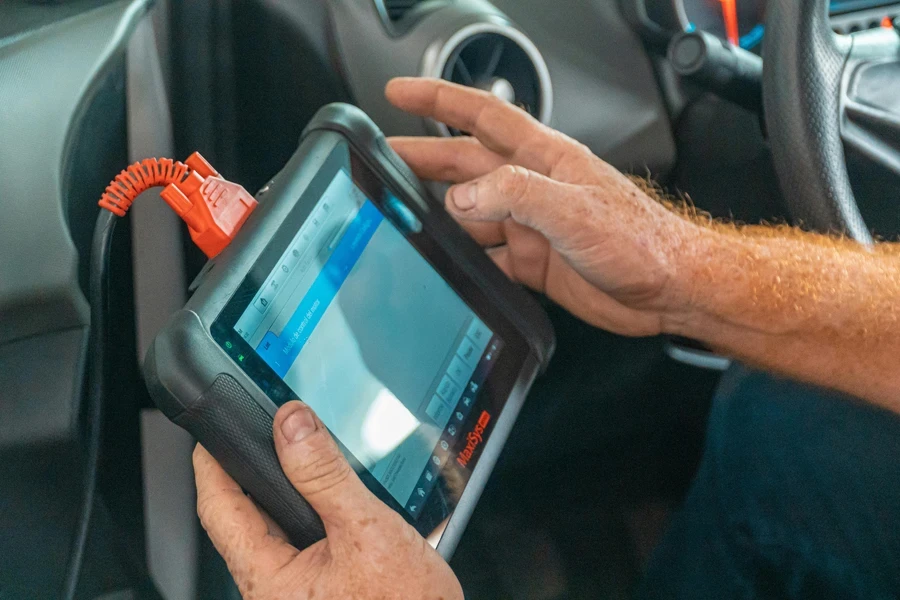
Automotive display technologies have been evolving significantly, revolutionizing the interior of vehicles by offering an engaging and secure experience for drivers and passengers alike. These advancements range from OLED screens to augmented reality enhancements that improve the overall look and introduce modern features such as AI integration and gesture control to redefine how users interact with these systems. Let’s delve into the innovations shaping the future of automotive displays.
Flexible and curved displays
Curved and flexible displays are growing in popularity as companies strive to elevate aesthetics and enhance the visibility of their products. Leveraging OLED technology allows for adaptable screen layouts that effortlessly blend into dashboard shapes for a stylish and contemporary appearance. Based on research by Fortune Business Insights, car manufacturers such as Mercedes Benz and Hyundai are incorporating curved displays that merge entertainment systems with digital instrument panels to provide users with a more engaging and comfortable interface. This new style enhances the car’s look and makes it easier for drivers to see details without getting distracted.
Augmented reality head-up displays (AR-HUDs)
AR-HUD systems mark an advancement in display innovation as they project essential details such as navigation guidance and speed directly onto the windshield for drivers to easily access without diverting their attention from the road ahead. They overlay data within the driver’s line of sight to improve safety by enabling them to maintain focus on driving tasks without distraction. According to Automotive Technology sources, AR HUD systems are designed to decrease strain by providing information in a user-friendly manner, which proves particularly beneficial in challenging driving scenarios. The growing fascination with self-driving cars is predicted to boost the use of AR HUD technology for enhanced displays that promote more interactive driving journeys.
Integration of AI and gesture control
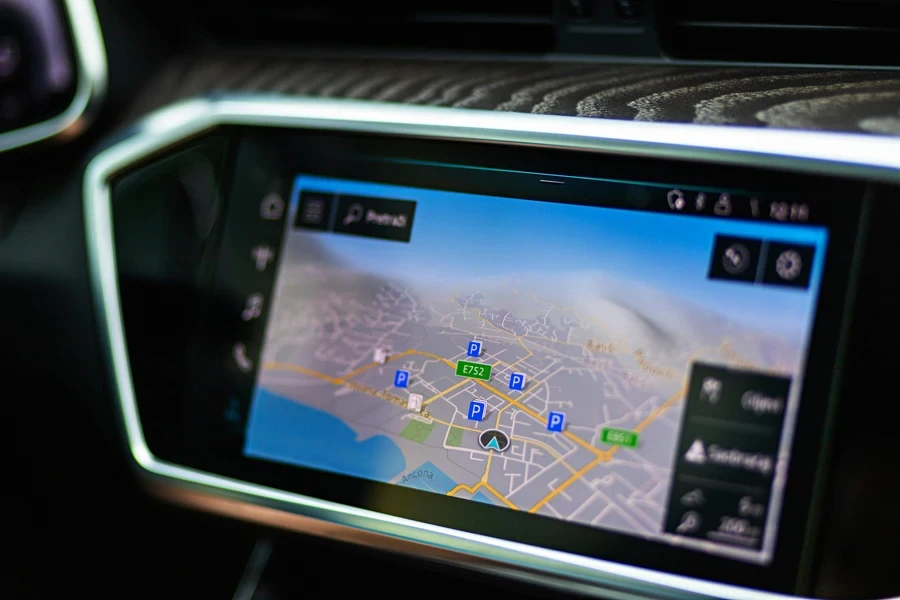
The use of AI and gesture control is revolutionizing the way users interact with vehicle infotainment systems. AI-driven functionalities enable voice recognition and predictive capabilities that adapt to user preferences, automating tasks like climate control adjustments based on past behavior. Gesture control adds to the convenience of allowing drivers to switch music tracks or navigate menus with simple hand movements. Automotive Technology notes that these innovations enhance user interaction while minimizing driver distraction, setting new standards for smart and connected vehicle environments.
Energy efficiency improvements
Energy efficiency is crucial in developing automotive display technologies, particularly for electric vehicles (EVs), where optimizing power consumption is essential. OLED and Mini LED displays are increasingly favored for their low energy consumption and high brightness, making them suitable for various applications, from infotainment screens to digital instrument clusters. According to Mobility Foresights, these energy-efficient displays are being adopted across different vehicle segments, helping to optimize power usage while delivering clear and bright visuals.
Top-selling models driving market trends
Top-selling models, that prioritize infotainment, luxury, and cutting-edge technology are shaping automotive display trends. These vehicles are driving market demand for larger, more interactive screens, setting new standards in user experience. From electric cars to higThearge in automotive display innovation.
Infotainment-centric models, from electric vehicles to high-end luxury cars
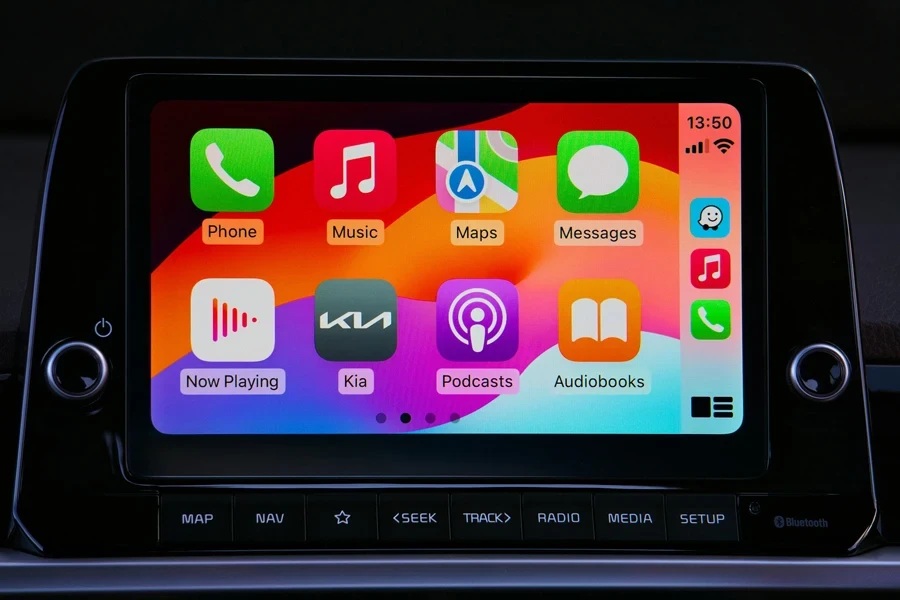
Models with expansive infotainment displays continue to lead the trend toward larger screens and more integrated digital experiences. The Tesla Model S and Model X showcase striking 17-inch touch displays that are central points for managing vehicle functions, entertainment options, and navigation features. Taking it up a notch, the Mercedes Benz EQS introduces the 56-inch MBUX Hyperscreen that spans the entire dashboard, housing three screens within a single sleek glass panel. Cardekho reported that the 55-inch curved screen of the Cadillac Celestiq is revolutionizing the industry by incorporating gesture controls for a user-friendly experience. These expansive displays showcase style and offer seamless, convenient access to essential information and entertainment features.
Luxury segment leading innovation
High-end car brands are exploring possibilities in screen technology by integrating state-of-the-art elements like OLED displays and augmented reality head-up displays (AR HUDs). For instance, the Porsche Taycan boasts a 16.8-inch curved screen for its digital instrument panel and additional touchscreens for controlling entertainment and climate settings. Meanwhile, Mercedes Benz is also making strides with OLED car screens, like the EQS model, delivering contrast and adjustable brightness to enhance visibility. BMW i8 luxury sedan comes with a 31.3-inch Cinema Screen for passengers to enjoy the upgraded front seat displays and prioritize car entertainment for everyone onboard.
Electric and autonomous vehicle displays
Electric cars and self-driving vehicles have unique screen display needs because they require real-time data display and system monitoring functions to operate on the roadways. The Lucid Air model includes a 34-inch display that merges the gauge cluster with a touchscreen entertainment system tailored for drivers’ convenience. On the other hand, the Rivian RIT is equipped with a 15.6-inch central touchscreen and a 12.3-inch digital display for drivers, offering details on managing electric power consumption range, navigation features, and off-road capabilities management. According to CarDashCams findings, these cars use top-notch screens and cutting-edge interfaces to provide information facilitating semi-autonomous and fully autonomous driving capabilities.
Regional best-sellers
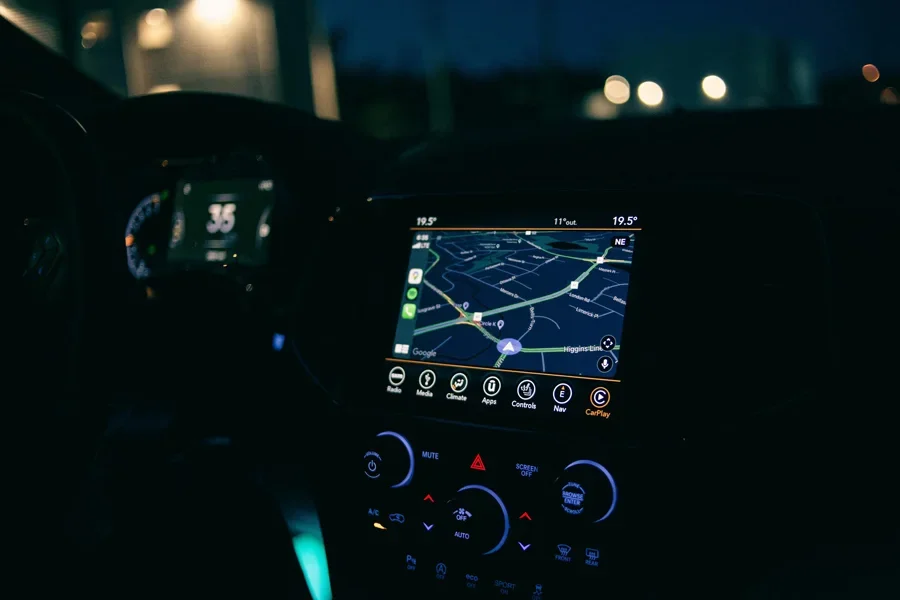
Different regions show varying preferences regarding display technology adoption; the Asia Pacific and European markets are leading in this trend. The Hyundai Ioniq 5 is popular in Asia Pacific countries for its 12.3-inch screens that attract tech consumers who value modern interiors. Meanwhile, in Europe, brands such as Audi and BMW are incorporating cockpits across their range of vehicles. For example, the BMW i7 offers a rear seat Theatre Screen to appeal to customers who appreciate in-car entertainment and luxury features. In these areas, the increasing use of screens demonstrates the rising interest in car interiors and smooth entertainment system incorporation that positions these markets as trendsetters in automotive display advancements.
Conclusion
The automotive display tech is advancing quickly, and the industry has changed with engaging and interactive in-car experiences. Exciting new features like OLED screens and augmented reality head-up displays are revolutionizing car dashboards into digital centers that boost safety and entertainment. These progressions are pushing market expansion and establishing standards for user involvement by incorporating high-quality displays and user-friendly controls tailored to drivers and passengers.
The rise of electric and self-driving cars is pushing the need for display technologies that provide real-time information and energy-efficient operation to new heights. With the introduction of features like curved displays and multi-screen setups in many vehicle models, the automotive display sector is moving beyond its traditional role in infotainment to create fully integrated digital environments. This continuous transformation raises consumer standards and reshapes connectivity, comfort levels, and vehicle driving experience possibilities.





 Afrikaans
Afrikaans አማርኛ
አማርኛ العربية
العربية বাংলা
বাংলা Nederlands
Nederlands English
English Français
Français Deutsch
Deutsch हिन्दी
हिन्दी Bahasa Indonesia
Bahasa Indonesia Italiano
Italiano 日本語
日本語 한국어
한국어 Bahasa Melayu
Bahasa Melayu മലയാളം
മലയാളം پښتو
پښتو فارسی
فارسی Polski
Polski Português
Português Русский
Русский Español
Español Kiswahili
Kiswahili ไทย
ไทย Türkçe
Türkçe اردو
اردو Tiếng Việt
Tiếng Việt isiXhosa
isiXhosa Zulu
Zulu